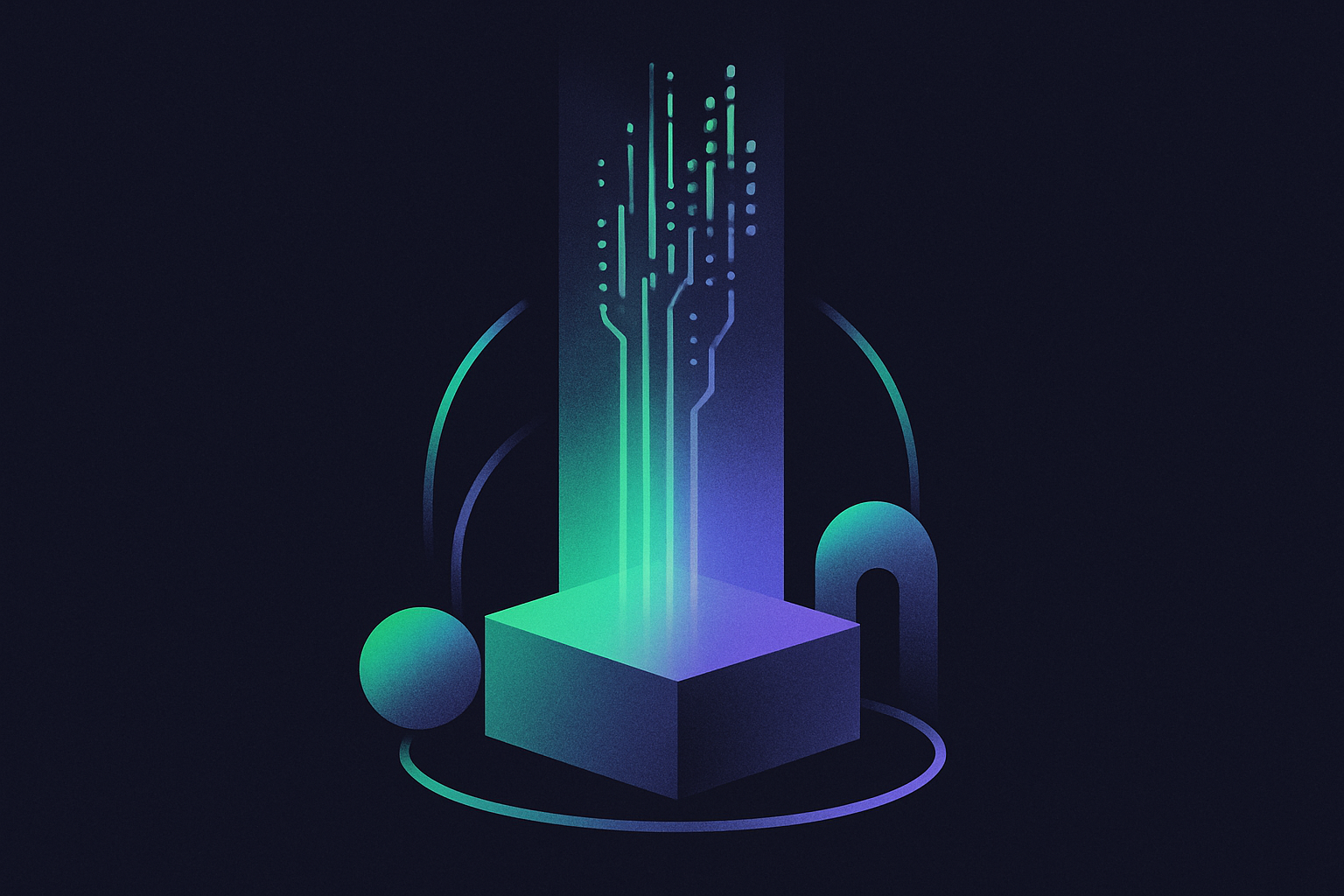The Sprint Planning Problem
Your AI tools generated more content, but they don’t understand your product-market fit, can’t navigate your stakeholder requirements, and certainly don’t know why your last campaign worked while others flopped.
The problem isn’t (just) your AI’s intelligence: it’s the context you’re not giving it.
Beyond Prompt Engineering: Building Systems That Actually Know Your Business
The era of prompt engineering is ending.
What worked in 2023 (crafting clever prompts to coax better outputs from AI models) has become table stakes.
Your competitors have caught up, and the marginal gains from better prompts are diminishing.
The breakthrough comes from context engineering: designing comprehensive information systems that give AI the business intelligence it needs to operate like an experienced team member, not a confused intern.
While prompt engineering focused on how to ask questions, context engineering focuses on what information systems your AI needs to give strategic answers. It’s the difference between teaching someone to fish versus giving them access to the entire ocean.
Recent research from Google’s ICLR 2025 study on “Sufficient Context” reveals what marketing teams have suspected: AI hallucinations aren’t just random failures. They also come from insufficient context.
The study demonstrates that when AI systems have access to sufficient relevant information, they can reliably determine when they have enough context to provide accurate answers—and crucially, when they should abstain from answering.
Context engineering transforms raw AI capabilities into business intelligence. Instead of hoping your AI guesses correctly about your brand voice, you build systems that know your product positioning, understand your customer segments, and apply your messaging strategy consistently across every touchpoint.

When Poor Context Breaks Your AI Marketing Team
Traditional marketing automation operates in silos.
Your email tool doesn’t talk to your content management system. Your social scheduler has no idea what your sales team is promising prospects.
But the real problem runs deeper than integration challenges. Without proper context engineering, AI systems fail in two distinct ways:
Direct Errors from Hallucinations: Research from enterprise RAG implementations shows that AI systems with insufficient context don’t just perform poorly—they confidently generate factually incorrect information.
For example, a customer service chatbot might provide wrong billing information because the system incorrectly correlates data from different customer accounts.
Poor Quality from Context Loss: More common in marketing operations is the gradual degradation of content quality. Your AI starts producing generic, off-brand content not because it’s hallucinating facts, but because it lacks access to your specific brand voice, competitive positioning, or strategic context.
Studies on prompt engineering limitations show this happens when business context is shallow, inconsistent, or becomes stale over time.
Consider these common failure patterns that emerge from insufficient context:
The Generic Content Problem: Your AI generates blog posts that could belong to any company in your space because it lacks specific product knowledge, customer insights, or competitive positioning. The content isn’t wrong—it’s just strategically useless.
The Brand Voice Drift: Content starts on-brand but gradually shifts toward generic corporate speak because the AI system doesn’t have continuous access to your authentic brand voice examples and guidelines. Research on AI consistency challenges demonstrates how AI systems default to training data patterns when context is insufficient.
The Strategic Disconnect: AI tools execute tactics without understanding strategic objectives, creating content that technically meets requirements but misses business goals entirely. Enterprise AI evaluation studies reveal this occurs when business context isn’t properly structured for AI consumption.
Context engineering solves both problems by creating shared business intelligence across all systems. Instead of hoping your AI agents perform correctly, you build systems where:
- Content Agents access: brand guidelines, top-performing content analysis, current product messaging, competitive positioning
- Research Agents access: industry reports, customer feedback databases, competitive intelligence, market trend analysis
- Distribution Agents access: channel performance data, audience segmentation rules, optimal timing algorithms, A/B testing results
- Content Agents access: brand guidelines, top-performing content analysis, current product messaging, competitive positioning
These agents don’t just execute tasks—they collaborate using shared context about your business objectives, brand constraints, and performance data.
Implementation: From Context Chaos to Strategic Coordination
Phase 1: Context Audit
Map every source of business intelligence your marketing team currently uses. Include brand guides, customer research, competitive analysis, performance data, stakeholder feedback, and institutional knowledge from your best performers.
Document not just what information exists, but how decisions get made. When your team chooses headlines, adjusts messaging, or selects channels—what factors drive those choices? That decision-making logic becomes your context architecture.
Phase 2: Context Architecture
Structure your business intelligence for AI consumption. This isn’t about dumping files into a database—it’s about creating relationships between information.
Your context system should include:
- Brand Intelligence: Voice, positioning, messaging hierarchy, competitive differentiation
- Audience Intelligence: Segment profiles, behavioral data, engagement patterns, conversion triggers
- Performance Intelligence: What worked, why it worked, when it stopped working, optimization patterns
- Market Intelligence: Industry trends, competitive movements, regulatory changes, technology shifts
Phase 3: Context Integration
Connect your context architecture to your execution systems. This is where RAG (Retrieval-Augmented Generation) technology becomes critical. When your AI creates content, it should automatically access relevant brand guidelines, audience insights, and performance data.
Your content creation workflow transforms from “write a blog post about X” to “create content about X for audience segment Y, incorporating messaging priorities Z, optimized for channels A and B, following performance patterns from successful campaign C.”
Phase 4: Context Learning
Build feedback loops so your context system evolves with your business. When campaigns perform well, capture what made them successful. When messaging shifts, update the underlying context. When new competitors emerge, integrate competitive intelligence.
This isn’t set-and-forget automation—it’s strategic coordination that gets smarter with every campaign.
Strategic Insights: Think Team, Not Tool
Context engineering represents a fundamental shift in marketing operations.
Instead of using AI as a content generation tool, you’re building an intelligent marketing team that understands your business as deeply as your best human performers.
This approach aligns perfectly with how successful marketing organizations actually operate: through shared intelligence, coordinated execution, and continuous learning.
Context engineering just makes these processes scalable.
The companies winning with AI aren’t those using the most advanced models, they’re building the most comprehensive business context systems.
Your competitive advantage comes from how well your AI understands your specific market, audience, and strategic objectives.

Context Windows Won't Last Forever
Even the most sophisticated context engineering approaches face a fundamental limitation: context windows don’t scale infinitely. Current AI systems operate within fixed token limits: whether 32K, 100K, or even 1M tokens, and they have no awareness of when they’re approaching these boundaries.
As your conversation with an AI agent extends, or as you inject more business context, you eventually hit the wall. The system starts losing early context to make room for new information, often without any indication that critical business intelligence has been dropped.
Traditional single-agent systems fail here because they can’t manage their own context consumption. They don’t know when they’re about to lose important brand guidelines, customer insights, or strategic constraints that were provided earlier in the conversation.
Multi-agent architecture solves this systematically. Instead of cramming all context into a single conversation thread, you deploy specialized agents with dedicated context responsibilities:
- Context Manager Agents monitor token usage and context relevance across all active agents
- Memory Agents maintain persistent storage of critical business intelligence
- Injection Agents strategically provide relevant context to working agents exactly when needed
This approach ensures that your content creation agent always has access to current brand guidelines, your research agent retains competitive intelligence, and your distribution agent maintains audience segmentation rules, regardless of conversation length or complexity.
The result is consistent strategic execution that doesn’t degrade over extended interactions or complex multi-step campaigns.
Fylle's Approach: Building the Context Foundation
The next generation of context engineering requires more than just RAG implementation: it needs intelligent knowledge base management that evolves with your business.
The solution lies in multi-agent architectures. Instead of relying on a single AI system that gradually loses context awareness, you need external agents that maintain persistent context and inject relevant information precisely when needed.
At Fylle, we’re developing a system that creates an intelligent brand brain through guided onboarding, maintained by assistant agents that keep it perpetually current.
Our approach addresses the core challenge of context engineering: ensuring your AI agents always have access to relevant, up-to-date, and properly structured business intelligence.
This means your context system doesn’t decay over time: it gets smarter and more accurate as your business evolves.
When your AI agents have access to this living knowledge base, they don’t just generate content—they create authentic brand expressions that feel genuinely yours, every time. The technology exists to transform marketing operations from chaotic execution to strategic coordination.
Ready to explore context engineering for your marketing operations?
The methodology is proven. The question is whether you’ll build marketing operations that think strategically, or continue managing tools that operate without business intelligence.
📚 SOURCES & REFERENCES
Industry Research Sources: • Google Research – Sufficient Context: A New Lens on Retrieval Augmented Generation Systems – https://research.google/blog/deeper-insights-into-retrieval-augmented-generation-the-role-of-sufficient-context/ – [Accessed August 28, 2025] • Data Science Dojo – What is Context Engineering? The New Foundation for Reliable AI and RAG Systems – https://datasciencedojo.com/blog/what-is-context-engineering/ – [Accessed August 28, 2025] • Sundeep Teki – Context Engineering: The 2025 Guide to Advanced AI Strategy & RAG – https://www.sundeepteki.org/blog/context-engineering-a-framework-for-robust-generative-ai-systems – [Accessed August 28, 2025]
Business Data Sources: • AWS – What is RAG? – Retrieval-Augmented Generation AI Explained – https://aws.amazon.com/what-is/retrieval-augmented-generation/ – [Accessed August 28, 2025] • Aya Data – The State of Retrieval-Augmented Generation (RAG) in 2025 and Beyond – https://www.ayadata.ai/the-state-of-retrieval-augmented-generation-rag-in-2025-and-beyond/ – [Accessed August 28, 2025] • Squirro – The State of RAG in 2025: Bridging Knowledge and Generative AI – https://squirro.com/squirro-blog/state-of-rag-genai – [Accessed August 28, 2025]
Case Study Sources: • SharpSpring – Proving ROI With Marketing Automation – https://sharpspring.com/resources/bryton-case-study/ – [Accessed August 28, 2025] • ActiveCampaign – 10 Marketing Case Study Examples – https://www.activecampaign.com/blog/marketing-case-study-examples – [Accessed August 28, 2025] • The CMO – 13 Marketing Automation Case Studies To Showcase Its Potential – https://thecmo.com/marketing-operations/marketing-automation-case-study/ – [Accessed August 28, 2025]
Statistical Sources: • SiliconANGLE – Contextual AI launches RAG 2.0 platform – https://siliconangle.com/2025/01/15/contextual-ai-launches-rag-2-0-platform-aid-development-domain-specific-ai-agents/ – [Accessed August 28, 2025] • Microsoft Cloud Blog – AI-powered success—with more than 1,000 stories of customer transformation – https://www.microsoft.com/en-us/microsoft-cloud/blog/2025/07/24/ai-powered-success-with-1000-stories-of-customer-transformation-and-innovation/ – [Accessed August 28, 2025]
Research conducted on August 28, 2025. All data current as of publication. Content produced with AI assistance for enhanced research and analysis.
This article was produced by Fylle’s AI content marketing system.
All images were created using OpenAI’s Sora image generation technology.

